Click below to watch the video
Where was the original ZamZam well? In Mecca or in Petra?
Transcript
Video #7 This is a general transcript of a Dan Gibson video in the series: Archeology and Islam.
Hello and welcome to another video in the series Archeology and Islam. In this program we are going to talk about the well of Zamzam in Mecca and also in Petra.
In the books and film, I discovered that all of the early mosques of Islam pointed to Petra in Jordan and not Mecca in Saudi Arabia. If you want to learn more about that see the video: *The Sacred Cit*y, or look up the book: Early Islamic Qiblas. And I have suggested that Petra is the city where Muhammad was born, and where the first Ka’ba was located.
Now in response to this, several people have asked about the well of Zamzam. Is there a well in Petra known as Zamzam?
Actually we don’t know the names of the places: the mountains, nor the temples, nor the different locations in Petra because those records didn’t come down to us. But we can go to those locations we can look at them to see, does the description fit the descriptions that were written long ago.
Now in our search for Zamzam first, we should note that the word Zamzam does not appear in the Qur’an. If it was of some importance, I would expect the Qur’an to mention it, or at least say something in passing, but Zamzam is never mentioned. Even when the Qur’an speaks about Abraham and Ishmael, and Hagar, Zamzam is not mentioned. So we must turn to the Hadiths and to the Histories and learn about Zamzam. We can find the story in Bukhari’s Hadith. (Sahih al-Bukhari 3364, Bukhari, Book 60, Hadith 43, Vol. 4, Bukhari, Book 55, Hadith 583)
This is a hadith narrated Ibn ‘Abbas and I will just paraphrase it as we go along. After Abraham’s second son was born, he declared Isaac to be the son of promise. And so trouble began between Abraham’s two wives: Sarah and Hagar. And they caused him no end of trouble. So Abraham took Hagar the mother of Ishmael, and the boy; he brought them to a desert valley.
Bukhari tells us that Hagar was still suckling the boy. Abraham brought them to a hill. And it was a small hill in the valley. It is described as the highest place by some writers, and by others as a hillock with a dry wadi bed beside it. When it rained, the water would run near this hillock, but at the time there was no water in the valley. And Abraham left them there.
Bukhari and other collectors of the Hadith go to great pains to tell us that this is the place where the Ka’ba would later stand. So Abraham made them sit near the place and he gave them a leather bag containing some dates, and a small water-skin containing some water, and he began to leave them. Then Hagar, Ishmael’s mother followed him saying, “O Abraham! Where are you going, leaving us in this valley where there no people? But Abraham did not look back. And she asked him, “Has God ordered you to do so?” He said, “Yes.” She said, “Then He will not neglect us.” Abraham proceeded onward, and on reaching the Thaniya, or the narrow canyon where he could turn and disappear out of sight. And as he reached that spot. As he went around and began in that canyon, they could not see him, he turned around and be prayed to them. I can see this happening in Petra. As he crosses the valley from Safa over to Marwah where the colonnaded street is today. And there you turn right to go down towards the treasury, and then you turn to go into that thaniya that goes out.
Eventually Hagar eventually runs out of water and she could no longer suckle Ishmael. He began to cry with hunger. So she left him and climbed the nearest mountain which is Safa. And she stood on this mountain and looked to see somebody, but there was nobody.
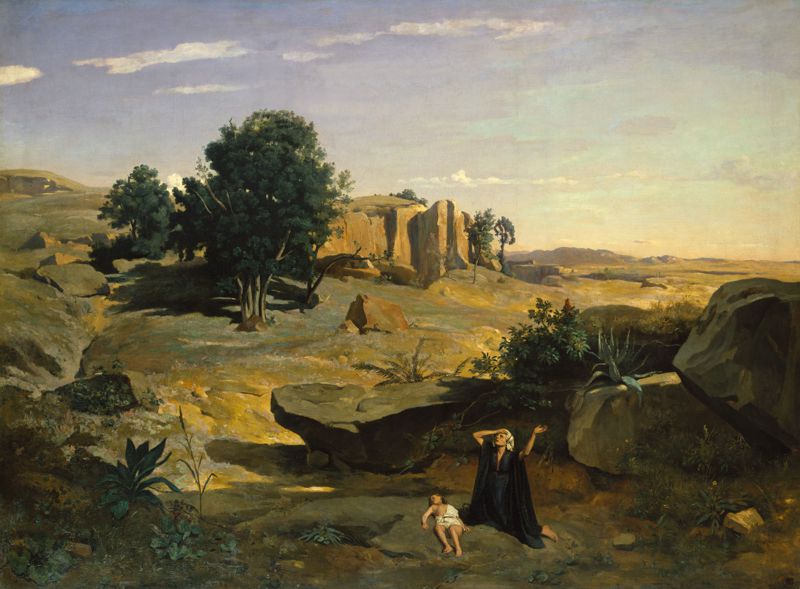
Painting of Hagar and her child
Then she descended from Safa and the child still cried. So she ran across the valley and climbed the mountain known as Marwah. And she could not see anyone either from Marwah.
She repeated this running between Safa and Marwah seven times.” The Prophet Muhammad tells us that this is the source of the tradition of the walking of people between Safa and Marwah during their pilgrimage. This pilgrimage and this practice goes back many years before the prophet Muhammad. It was taking place. And we read this in Bukhari and others. It was taking place long before. Now back to Bukhari’s hadith..
And then an angle spoke to Hagar and the angel dug in the earth with his heel. Now some hadith records say he dug with his wing, and the water flowed from this place. And Hagar made a rim around it, and it became Zamzam.
Years later Abraham and Ishmael who is now older, they built an altar on that small hillock, which became the first House of Worship, or the House of God in that valley. Later the Ka’ba was built near that spot.
So we are told that the House of God was built on a hillock, and when torrents of rain come, they flowed to its right into its left. So the House of God doesn’t flood.
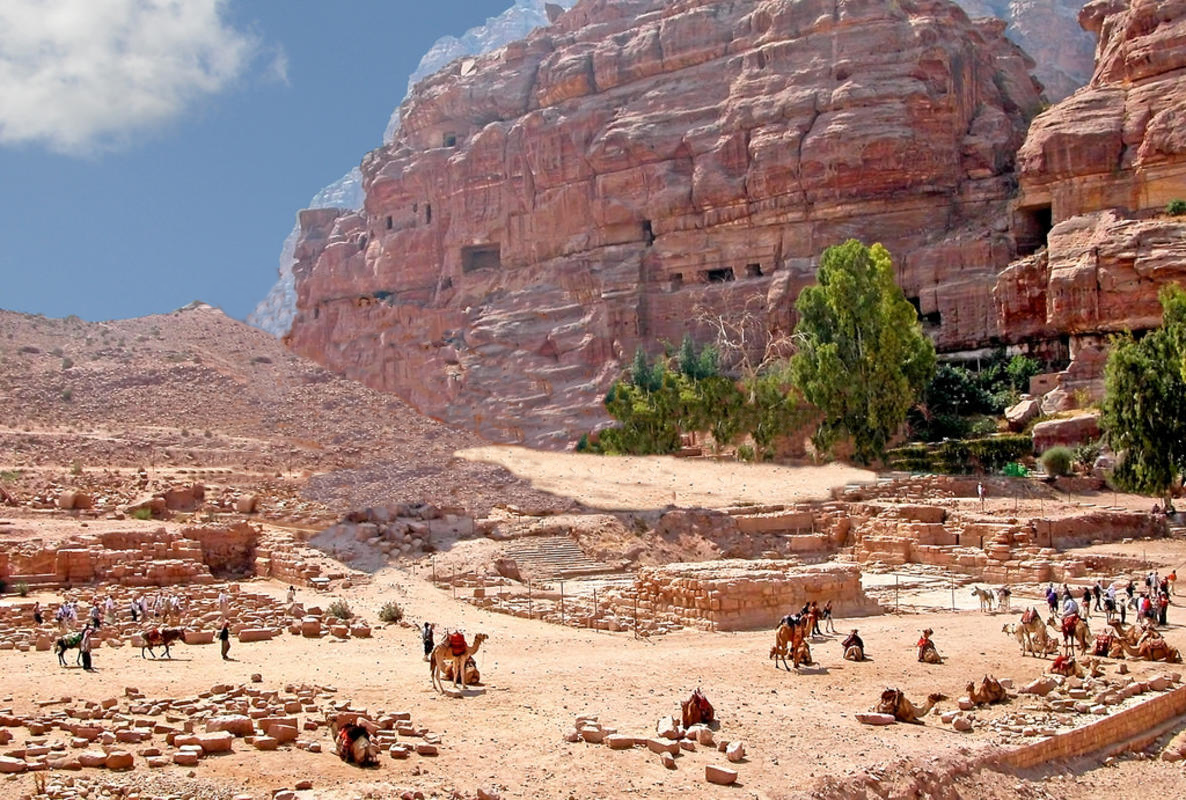
The Petra Ka'ba with the temple of Hubal removed
Here you can see the hillock in Petra, especially if we remove the Dhushares Temples.
Hagar lived in that valley until some people from the tribe of Jurhum moved into the valley. So there she is living and this new tribe moves in and she allows them to stay there, but she maintains control of the well and the water. But she is pleased because of the company of other people. And Bukhari then tell us that Ishmael grew up there and learned Arabic, the Arabic language from the Jurhum. That is important because Abraham and Hagar and Ishmael would have been speaking an early form of Hebrew, not Arabic. And so eventually Ishmael had to learn the early Arabic language.
Now the writings of Moses in the Bible, it has a similar story. It is found in Genesis 21:14. I thought we should read that so we could compare the two stories. The story that Moses recorded is written many years before Muhammad. So we are going back to a much earlier story.
It tells us that Abraham rose up early in the morning, and he took bread, and a bottle of water, and gave it unto Hagar, putting it on her shoulder, and the child’s, and sent he sent them away: and she departed, and wandered in the wilderness.
And the water was spent in the bottle, and she cast the child under one of the shrubs. Then she went way and sat her down over against him a good way off, as it were a bowshot: for she said, “Let me not see the death of the child.” And she sat over against him, and she lifted up her voice, and wept. Notice she is weeping.
And then God heard the voice of the lad crying, so he is crying as well, and the angel of God called to Hagar out of heaven, and said unto her, What ails you, Hagar? fear not; for God hath heard the voice of the child where he is. Arise, lift up the lad, and hold him in front of you; for I will make him a great nation.”
Then God opened her eyes, and she saw a well of water; and she went, and filled the bottle with water, and gave the lad drink.
In both these stories they have similarities:
Hagar and the child are cast out of the home where Abraham is; and the child and Hagar are in this valley and they begin to cry and to weep. I believe that this is one of the reasons why this valley would have become known as the valley of Becca, or the valley of weeping. And why some people would have come here for pilgrimage to remember this spot where Hagar was left. And I believe this took place in the valley where Petra, the city of Petra was later built. And you can go to Petra and you can see the things that were there in this story.
Now in both of these stories, Hagar is shown a source of water, a water source known as Zamzam.
A number of people have written to me to ask about Zamzam. If I locate the Ka’ba in Petra, then where is the well of Zamzam? That’s a good question.
What did we learn from the story? The Ka’ba and the well are between the two mountains of Safa and Marwah. Not small hills. Here it talks about the two mountains.
And the House of God is built on the hillock closer to Safa than Marwah. And so Zamzam was nearby. If we read other stories in the Hadiths, we will learn that the well of Zamzam sometimes filled up with sand, an had to dug out. (Sahih Bukhari Volume 4, Book 53, Number 384)
That is an interesting thing because… Bukhari also tells that there were steps going up to Zamzam. So if there were steps, how does it need cleaning out? That is a curious question?
Now if we look at Petra we can see where these things are. Here is a map of Petra.
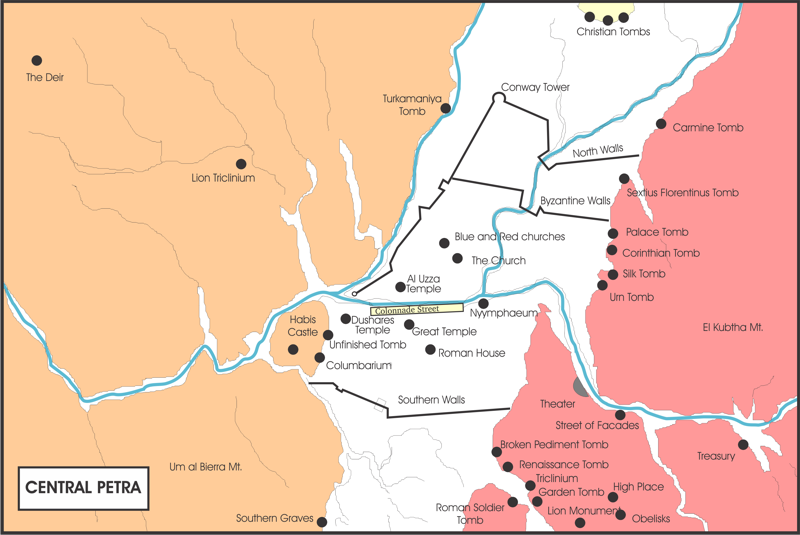
Map of the Petra valley
Safa was the mountain on the left side of the valley. Marwah was the mountain on the other side of the valley. Close to Safa, there is small hillock, where the largest and most important temple is today.
If Abraham and Ishmael built the first house of God here, then it must have been later replaced by other temples, built on this spot as it was the most holy spot in the valley. And that is why this great structure is built on that location today.
Between Safa and Marwah in the city of Petra, there is a street that goes from one mountain over to the other mountain. And that is where people performed the ritual crossings of the mountain in memory of Hagar crossing seven times.
And then beside that road, there is a watercourse where Muhammad chose to run in…in the watercourse rather than on the road, and that is recorded for us as well. So the well of Zamzam is somewhere along this colonnaded street.
Well today water comes into the valley through aqueducts and pipes. So the well of Zamzam has been lost, and it has been covered up by the years of floods because once the dam broke that held back the water that flowed to this wadi, going through Petra because it was a great city they built this dam. When it eventually broke the floods came in and anything alongside of the watercourse has been flooded and has been damaged by the water coming in and the water leaving literally tons of rubble all the way through the city of Petra. So today, it is all covered up and we can only venture a guess as to where Zamzam is. But I think we can venture a very good guess. You see, the question is: Where was there water in this valley, access to water that did not come from the wadi, that did not come through the pipes that came into the city?
And I believe that is a place the Romans called the nymphaeum. And it is built at the junction of two wadis in Petra. (see map above)
The name nymphaeum refers to a place where nymphs would live. These structures are usually built where there is a spring or a well.
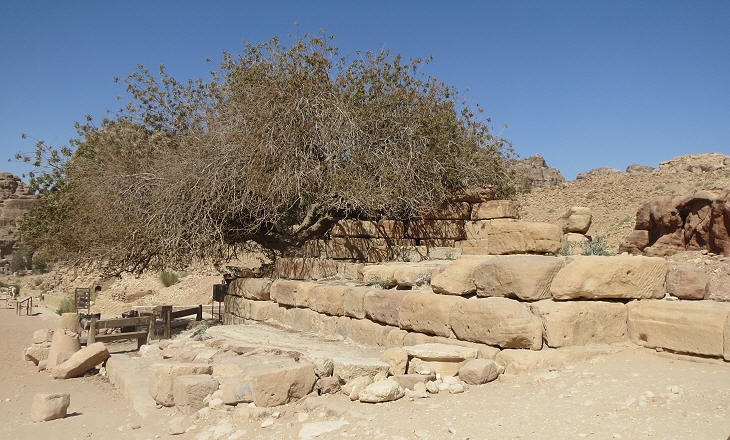
The Nymphium in Petra
So in this valley we have a nymphaeum and if the record is true it had steps leading up or down to it, and it would have doors. When it rained in the surrounding hills, the water would also flow past it and could also fill it up with silt and it would have to be cleaned out.
This is why in Islamic history, several times Zamzam filled up and would continually need to be cleaning up.
Where did this name Zamzam come from? Now some writers have tried to explain this. Back in Islamic history they have come up with this explanation. they say: Oh, it comes from Zome Zome. And they suggest that this was a command repeated by Hagar during her time to contain the water that was flowing out of the well. Saying Dumi Dummi Dummi to keep the water from flowing. Now it is a bit strange because this is an Arabic word and it is not the language that Hagar would have spoken. She spoke Hebrew, and Abraham spoke Hebrew, an early form of it and Arabic is a different language. And in Arabic word here is Dummi. Dummi. It is a heavy D and a sheddi miim. Dummi Dummi. So suggesting somehow that Dummi Dummi changed into Zamzam. I have a problem. It doesn’t sound that close to me, even if you use some Arabic dialects I think there is a better explanation.
On my computer I keep a database. I have thousands of books and articles, some in English, many in Arabic, and some in French, and German and Italian, and so on. And I can go into the database and search. It is an electronic database. So I decided to search my database for the combination of letters ZmZm. ZamZam
And I was amazed at what I found. Outside of Bukhari and other hadith writers, only one reference came up. Only one place.
It is fascinating because it is in the writings of Moses, written thousands of years earlier. And Moses writes to us about a people known as the Zamzimians. (Deuteronomy 2:20) These Zamzimians were a tall people, who lived in the land of Seir. Now, it would seem to me that if one was looking for the well of the Zamzimians, the well of Zamzam well, you would need to look in the land of Seir where the Zamummims lived.
Now Mount Seir is the name given to a small chain of mountain, that later Romans would call Petra. So it is no surprise to find the well of the Zamzimians in Petra. Other than this, I found no other reference to z-m-z-m. Now ancient wells are usually called after the person who dug them, or by the region they’re in.
The well is also called the Well of Ishmael. This makes sense if we are talking about Petra. Because Abraham and Lot, and Isaac and Ishmael they all grazed sheep on the hills on both sides of the valley that is south of the Dead Sea.
They would have been on the western side or on the eastern side, looking down on the plains that are south of the Dead Sea, and the cities that were on the plain.
Now today many Muslims think highly of the Well of Zamzam. They think that there is something special about that water. There is some special blessing associated… with the water of Zamzam. Some people want to wash in it. Some people want to drink it. Other want to take it back to their loved one and anoint with them.
So all over the world, people seek after the water from Zamzam. But archeology is showing us that Petra, in Jordan was the original holy city, and in that valley, where Abraham left Hagar, is the original Zamzam. And over the years it has repeatedly filled up with debris and has had to be cleaned out. (Sunan Abū Daoud 2507) And today, it is again filled with debris. (Ṭabarī 23:148) But rather than desiring the water of Zamzam, Isa Ibn Mariam, who is also called Yassu’ said to us: Whosoever drinks of the water that I give him shall never thirst; and the water that I give him shall be in him like a well of water springing up into eternal life. So friends seek that water, not just water from a well from long ago.
I am Dan Gibson, and this has been another episode in the series: Archeology and Islam.
Bibliography
Bukhārī, *al-Tarikh al-Kabīr, al-Tarīkh al-Ṣaghī*r, and al-Tarīkh al-Awsaţ
Gibson, Dan, Early Islamic Qiblas, Independent Scholars Press, 2017
Gibson, Qur’anic Geography, Independent Scholars Press, 2011
Ibn Hisham, (2010) English Translation, https://asimiqbal2nd.files.wordpress.com/2010/09/seerah-ibnhisham.pdf
Credits
Photos by: Dan Gibson, David Shankbone, Dennis Jarvis, Jonsafari, Roberto, Piperno, www.romeartlover.it
Special thanks to: Chester Beatty Library, Abraham Path Initiative
Artwork by: William Ladd Taylor, William Gale, Jean-Charles Cazin, Jean-Baptiste-Camille Corot, Frederick Goodall, Dan Gibson
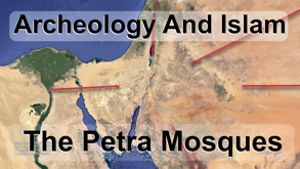
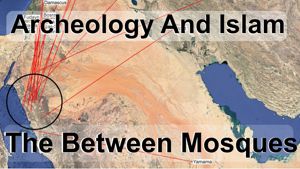

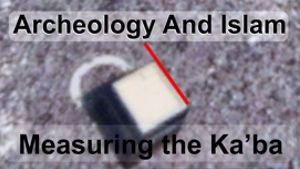
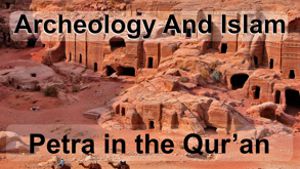
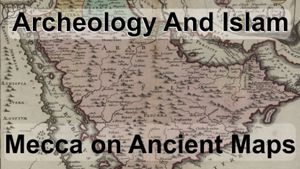
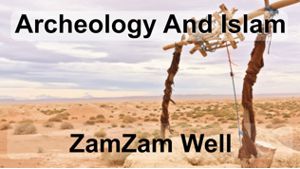
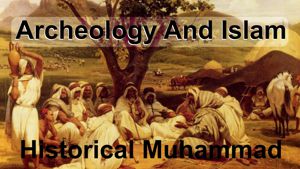
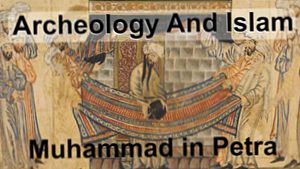
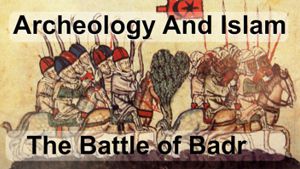

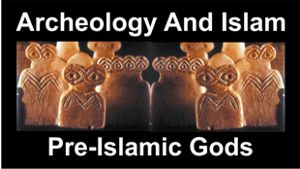







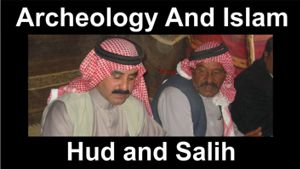
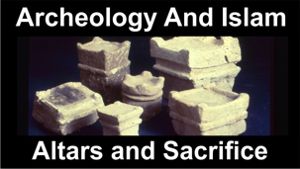

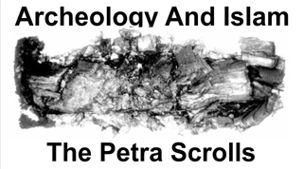
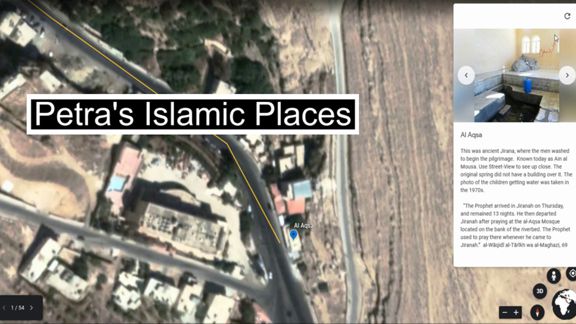

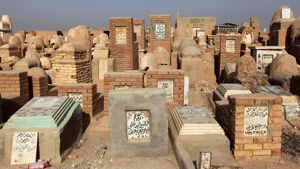
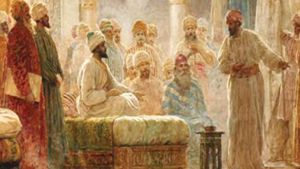
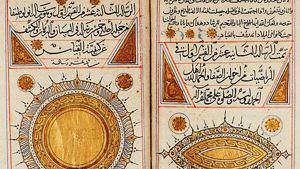
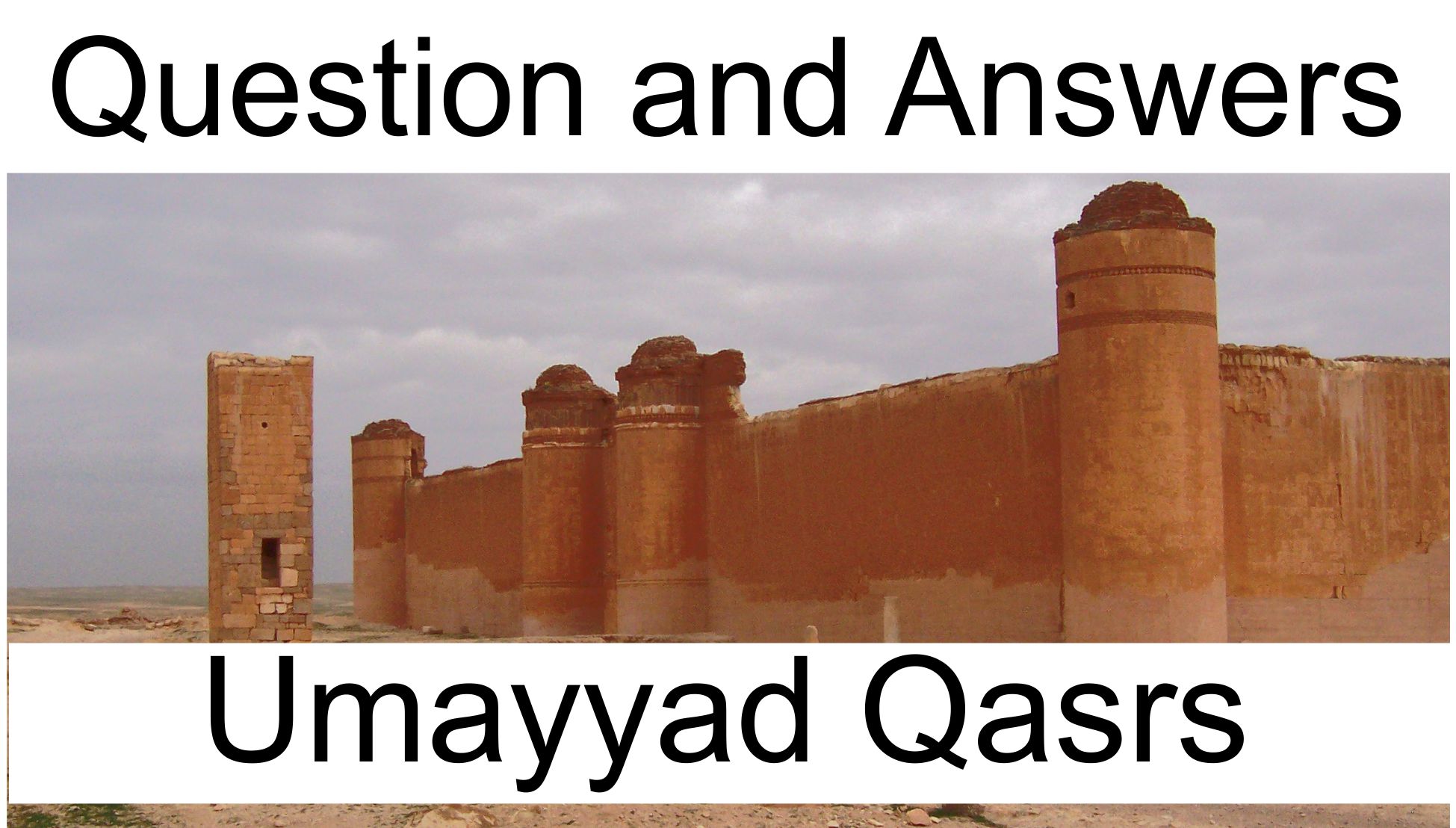
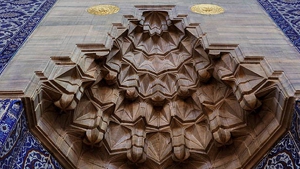
Page Discussion
Membership is required to comment. Membership is free of charge and available to everyone over the age of 16. Just click SignUp, or make a comment below. You will need a user name and a password. The system will automatically send a code to your email address. It should arrive in a few minutes. Enter the code, and you are finished.
Members who post adverts or use inappropriate language or make disrespectful comments will have their membership removed and be barred from the site. By becoming a member you agree to our Terms of Use and our Privacy, Cookies & Ad Policies. Remember that we will never, under any circumstances, sell or give your email address or private information to anyone unless required by law. Please keep your comments on topic. Thanks!